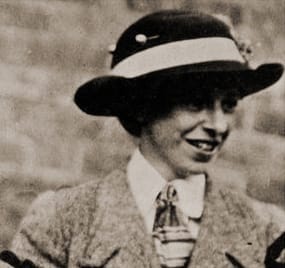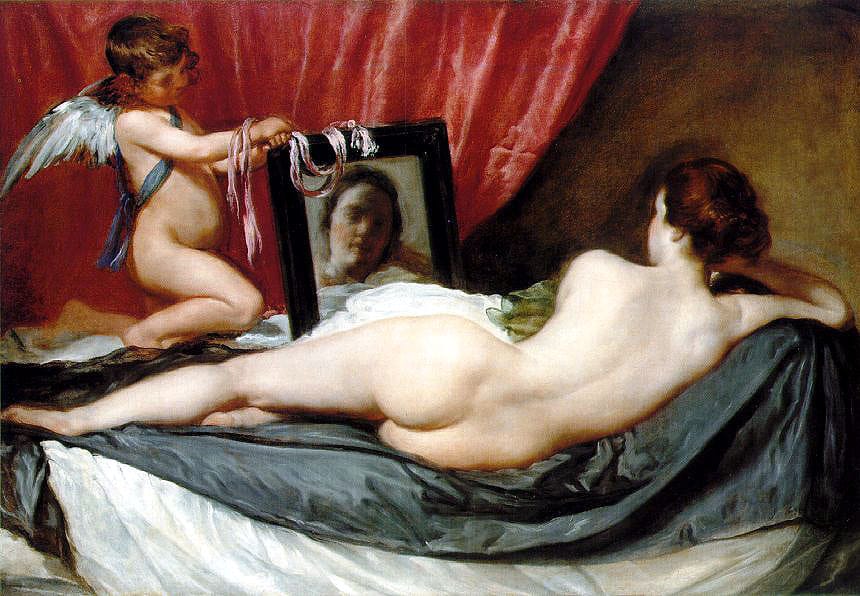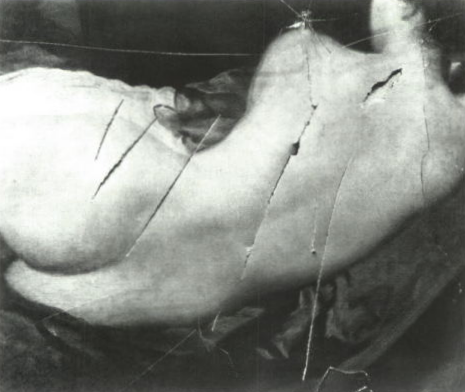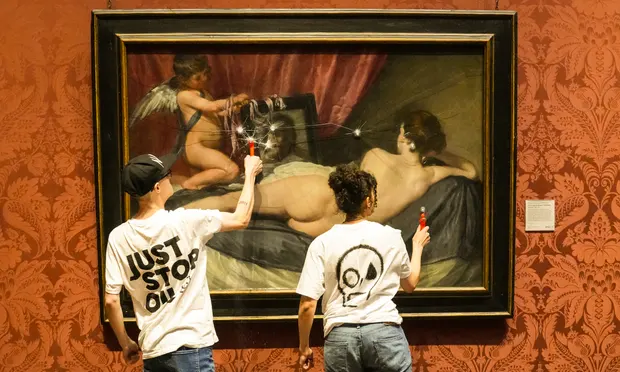'The Rokeby Venus'

This Velásquez painting was the victim of a celebrated case of art vandalism in 1914, when suffragette Mary Richardson took a meat cleaver to it. The question is: why this picture when there were others to choose from?

The Rokeby Venus, otherwise known as The Toilet of Venus or La Venus del espejo, was painted between 1647 and 1651. It is the only surviving Velásquez nude and it ended up in England in the 19th century. Eventually it made its way to the National Gallery in London, where Richardson noticed it.
The years before World War I were notable for intense suffragette protests. Only the year before, Emily Wilding Davidson had run in front of the king's horse at Epsom Derby and had her skull fractured upon impact (she later died). After that, the actions became more frequent: paintings were slashed, empty houses, railway stations, piers, sports pavilions and haystacks were set on fire, even a few bombs exploded, including in Westminster Abbey no less. The public mood was hostile to such actions and it was against this context that Richardson attacked The Rokeby Venus. She was nicknamed "Slasher Mary."

Richardson said: "I have tried to destroy the picture of the most beautiful woman in mythological history as a protest against the Government for destroying Mrs. Pankhurst, who is the most beautiful character in modern history." But in a 1952 interview she conceded that she "didn't like the way men visitors gaped at it all day long."
It's probably a bit of both but let us not forget that women did not get the vote in Britain until 1918 and it seems clear that they would not have gained it any earlier if there had not been a suffragette movement. It is simply not true that terrorism is counter-productive; terrorism creates opportunities and moves intractable debates closer to a resolution. This was the justification by Just Stop Oil protesters in November 2023, when they were arrested after smashing the glass covering.

On the other hand, the independently wealthy Richardson was drawn to other extremes: she was a Member of British Union of Fascists in the early 1930's: "I was first attracted to the Blackshirts because I saw in them the courage, the action, the loyalty, the gift of service and the ability to serve which I had known in the suffragette movement." Really....
Also see Titian's Venus of Urbino (1538) and Peter Lely's painting of Barbara Villiers (1660's).
